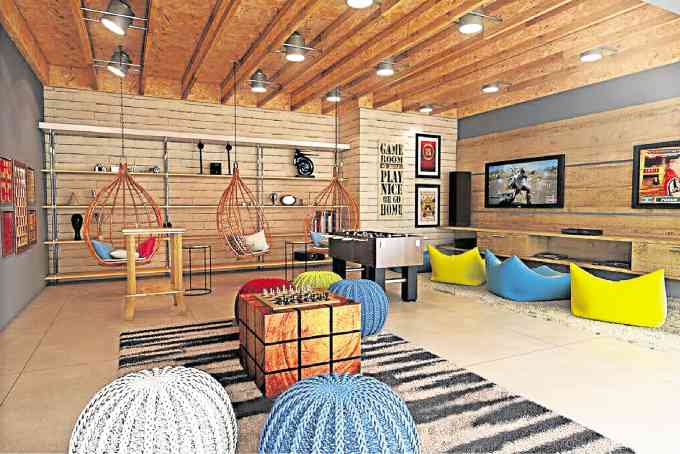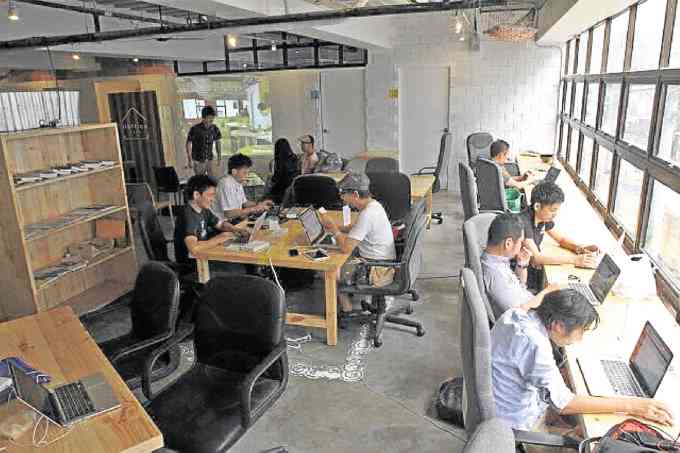Office spaces and millennials
There is an emerging demand for contemporary, flexible workspaces, driven partly by a growing market out to become a significant contributor to the local economy.
The millennials—or those born from 1982 to 2001—form a new market that companies seek to tap and which is set to dominate the Philippine workforce population in the next decade.
More recently, however, this same group—known for being tech savvy, creative, independent, and driven by instant gratification—is appearing to be one of the gamechangers in the office property market.
Randwil Dinbo Macaranas, senior manager for research at Colliers International Philippines, noted that the total stock of flexible workspaces in Metro Manila has reached 228,000 sqm—a number forecasted to grow as “demand for co-working spaces is spurred by a millennial-dominated labor force.”
Different workspaces
Co-working spaces are the newest types of flexible workspaces and formed one of the three major classifications in this segment.
In the Philippines, a flexible workspace is defined as “any workplace that allows short-term leases, with a minimum size of one seat, fully-furnished and ready-to-use. These workspaces may be private, shared, or a combination of both, offering scalability,” Macaranas said in a report entitled, Mining Millennials: Finding Gold in Co-working Spaces.
The other two classifications were serviced offices, which are located in central business districts, catering mainly to business travelers, expatriates and new entrant multinational companies (MNCs); and hosted services that attract mostly to small business process outsourcers (BPO) and other traditional companies that are not keen on having a prime address.
And so what exactly makes co-working spaces more appealing, particularly for the millennials, start-ups and local freelancers?
Macaranas explained that “apart from the contemporary design that integrates the comfort of home, the ambiance of your neighborhood café, and the functionality of your office, this flexible workspace type differentiates itself by the community it creates.”
“Co-working operators encourage tenants with similar interests to collaborate in a shared working environment. This group allows members access to the contact details of other members within a community to foster synergies. Common users of co-working spaces are start-ups and freelancers,” he added.
The emergence of co-working spaces in the country began in 2011 with Co Lab Xchange, followed by A-Space in the same year. Since then, other players have emerged such as Acceler8 (Finman Building), The Office Project (Alpha Salcedo Condominium), and Launch Pad (Commercenter). Majority of co-working operators entered the market in 2015 and 2016.
Today, co-working spaces spans across Metro Manila submarkets. Notably, operators have also started expanding to provincial locations such as Cebu, Iloilo, Bacolod, and Davao, Colliers reported.

Colliers expects the flexible workspace stock in Metro Manila to grow by 10 percent yearly in the next three years.
Growth drivers
Apart from the growing millennial workforce, Colliers identified four other key growth drivers for the whole flexible workspace segment.
These include MNCs seeking to save cost by placing project teams in flexible workspaces; BPOs, which remains to be a major driver of the office property market; emergence of start-ups and freelancers, who have limited capital; and the growing importance of technology, which has become the platform upon which corporates, entre-preneurs and freelancers have been able to execute their business plans.
Continued growth
Given these drivers, Colliers expects the current flexible workspace stock in Metro Manila to grow by at least 10 percent yearly over the next three years on the back of a faster growth from the co-working spaces. Among the reasons cited were:
Co-working is still in its early stages in the Philippines;
Serviced offices and hosted services firms find themselves participating in the co-working segment; and
Co-working provides the cost advantage that is important in a market characterized by increasing rents.
“Colliers believes that flexible workspace operators can consider buying office spaces and converting them to co-working spaces; or partnering with developers to mitigate the impact of increasing rents,” Macaranas said.
“On the other hand, we encourage developers to dedicate co-working spaces in their buildings to take advantage of the sector’s growth,” Macaranas further noted.















